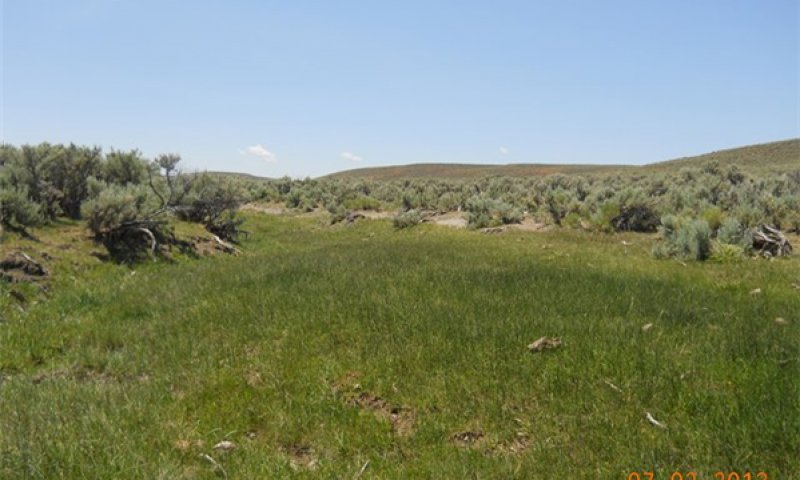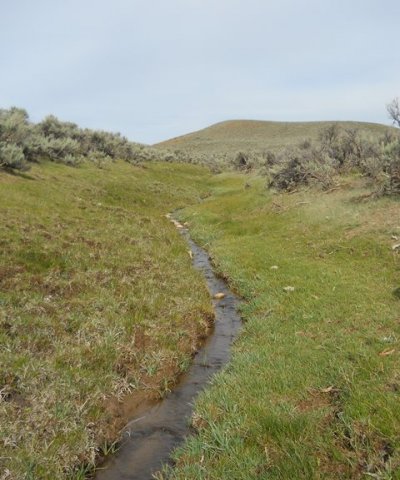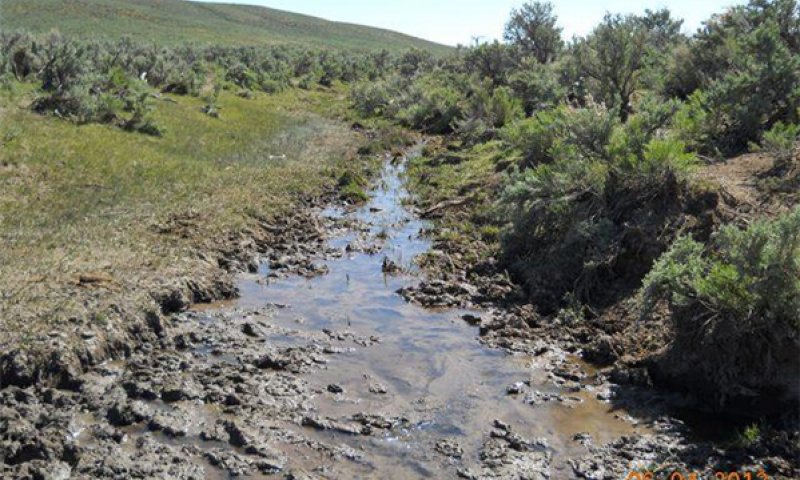

Natural Resources
Conservation Service
Ecological site R034AA013UT
Semi-Wet Fresh Meadow
Last updated: 9/07/2023
Accessed: 11/21/2024
General information
Provisional. A provisional ecological site description has undergone quality control and quality assurance review. It contains a working state and transition model and enough information to identify the ecological site.
MLRA notes
Major Land Resource Area (MLRA): 034A–Cool Central Desertic Basins and Plateaus
Major Land Resource Area (MLRA) 34A, Cool Central Desertic Basins and Plateaus, consists of approximately 21 million acres in Wyoming, Colorado and Utah, it consists of 11 Land Resource Units (LRU). These units are divisions of the MLRA based on geology, landscape, common soils, water resources and plant community potentials. The elevation spans from approximately 5600 feet (1700 m) along the Green River in UT and CO to approximately 9500 feet (2900 m) near Jeffrey City, WY. Annual precipitation ranges from 7 to 16 inches (177 to 406 mm), with the driest areas in the Green River and Great Divide Basins and the wettest areas in northern Carbon County, southeast Fremont County and Albany County. There is a seasonal weather pattern that trends west to east, with more winter precipitation in the west and more spring and summer in the east, illustrated by diminishing amounts of big sagebrush in the eastern part of the MLRA.
LRU notes
The Bear River Valley LRU is located on the far western side of MLRA 34A between the Bear River Divide and the Monte Cristo Range, from Woodruff, Utah at the southern end to Cokeville, Wyoming at the northern end. The total area of the LRU is approximately 340,000 acres. It shares a boundary with MLRA 47, 43B and 46 (proposed).
This LRU differs from the others in its geology, which is comprised mostly of alluvium and colluvium from the Stump Formation. Its weather patterns are such that the soil moisture is xeric, there is a slight peak in winter precipitation in this LRU, with typical yearly precipitation between 9 to 15 inches (230 to 380 mm). The soil temperature regime of this LRU is frigid with mean annual soil temperatures ranging from 44 to 48 degrees Fahrenheit (6.7 to 8.8°C). The elevation range is from 5700 to 7000 feet (1730 to 2130 m). The soils in the Bear River Valley are dominated by young aged very deep soils developed from sandstone and shale parent material re-worked with recent alluvium. Soils are dominated by Alfisols with young argillic horizons and by Fluvents in more recent alluvium.
The Bear River runs through this LRU, allowing for ample amounts of irrigation water used in the lowland areas to produce hay. Smaller tributaries originating from the neighboring mountains.
Ecological site concept
The Semi-wet Fresh Meadow ecological site is primarily fed by groundwater from springs. The ecological site has very narrow valley bottoms and a small contributing watershed area. The upland areas adjacent to this site are typically big sagebrush (Artemisia tridentata). The streams in this ecological site serve only to convey water away from the spring area. The stream is perennial when near the source (springs), and may become intermittent as move further downstream of the spring. Streams that are perennial where significant springs supply the system, may gradually become intermittent when spring influence ceases. This ecological site in a typical precipitation year does not experience high flows in the spring in association with snowmelt because of the small watershed. The valley and, more specifically, the wet area (green-line) is typically very narrow and confined. Slope is generally between one and two percent. There is one plant community component in the reference condition. The valley is typically narrow and confined.
Associated sites
| R034AA011UT |
Riparian Complex Perennial Gravelly VIII/E4 (Northwest Territory Sedge) |
|---|---|
| R034AA239UT |
Semi-desert Silt (Basin big sagebrush/ Bluebunch wheatgrass) |
Similar sites
| R034AA011UT |
Riparian Complex Perennial Gravelly VIII/E4 (Northwest Territory Sedge) |
|---|
Table 1. Dominant plant species
| Tree |
Not specified |
|---|---|
| Shrub |
Not specified |
| Herbaceous |
(1) Carex nebrascensis |
Click on box and path labels to scroll to the respective text.
Ecosystem states
| T1A | - | Non-native species introduced into the system |
|---|---|---|
| T2A | - | Channel incision occurs and water table lowered. |





